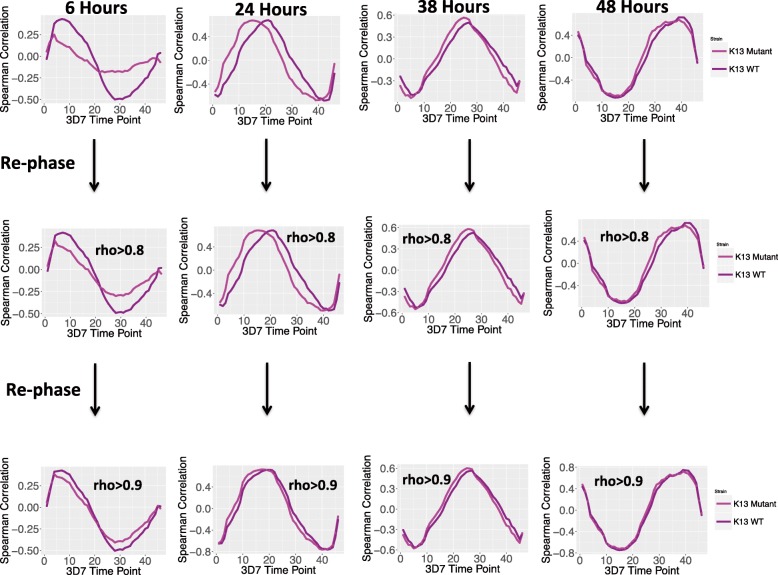Fig. 3.
The DI Algorithm identifies genes responsible for IDC correlation shifts. The DI algorithm identifies the genes responsible for decreasing the correlations of the mutant and wild-type transcriptomes by iteratively removing genes that show the largest changes in rank expression between them. The genes are removed in one quantile batches and the correlations between the transcriptomes are re-computed. The filtering process ends when the correlation between the mutant and wild-type transcriptomes is at least as good as the highest correlation either has with the Derisi 3D7 IDC transcriptome. The correlation to Derisi 3D7 IDC transcriptome was chosen as an unbiased cut-off since 2 samples from the same lab should be at least as well correlated with each other as a sample from a different lab. For the 6 h samples the DI algorithm identified 546 genes as most disruptive to the transcriptome correlations and for the 24 h samples 127 genes were identified as being de-phasing genes. The overlap between the dephasing sets was small (23 genes), but the genes identified as dephasing at 6 h showed consistent regulatory changes at 24 h (Additional file 2: S2–S5). The DI algorithm did not identify any genes as major disruptors in either the 38 h or 48 h samples. The shift in the 38 and 48 h curves results because the DI algorithm can make correlation curves arbitrarily precise, however the genes removed did not qualify as dephasing because the mutant and wild-type samples were already better correlated with each other than with the Derisi reference set

